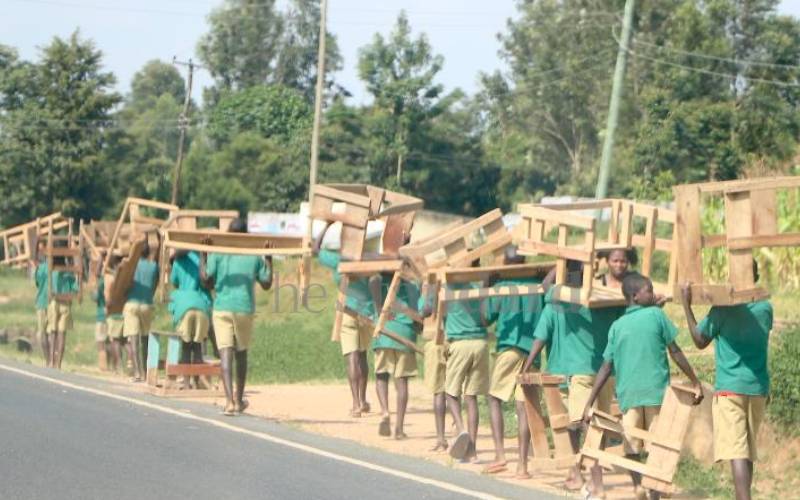×
The Standard e-Paper
Fearless, Trusted News

Buchinga Primary School pupils in Lurambi constituency take their desks to the carpenter for repair on June 12, 2021. [Benjamin Sakwa, Standard]
The government is staring at huge infrastructure and staffing challenges ahead of the much-anticipated transition from 8-4-4 system to the new Competency-Based Education (CBC).